
James McArdle writes on Robert Ashton, whose most recent exhibition was Bush Theatre at Qdos Arts Gallery, Lorne in April 2021. Ashton studied Photography at Prahran College 1969-71 under both the notorious Gordon De Lisle (1923-2002) and later, Athol Smith. He is a contemporary of mine, now 70, but had graduated before I enrolled there.
Head of department De Lisle was of the old school, a cadet at 15 on Sydney’s Daily Telegraph and a reconnaissance photographer with the RAAF in WWII, after which he moved to a prestigious address in Melbourne’s ‘Paris End’ amongst other professionals in Collins Street and there freelanced for industrial and government clients, and produced his ‘art’ photography on the side; graphic arts film high-contrast, often solarised, photomontages popular in the era, and nudes among the sand dunes, for his self-published 1970 book Of Woman Love and Beauty, possibly inspired by Sam Haskins.

After a near-fatal heart attack, De Lisle was replaced by Shmith, but did not stop working. He went on in 1974 to set up his own art gallery on the Sunshine Coast, and in between was featured in the gritty 1972 catalogue Concern: The Ilford Photographic Exhibition from submissions to a competition, the overall winner of which, GTV 9 employee Barrie Bell, now a freelancer, won $1000 and a round the world plane ticket for two, for his posed street photographs of a couple of ‘down-and-outs’, as they were then known.
The title Ilford chose nodded perhaps to the Cornell Capa edited The Concerned Photographer books of 1968 and 1972 but the contents are effete by comparison.
De Lisle’s series, treated with darkroom magic, improbably showed “the raped land, Australia, as it would appear to a [of course, nude] woman who returns from the dead to discover that her country, too, is dying,” and won the ‘Creative’ section, and $500.


Paul Cox, with assorted imagery, was also included, along with Rennie Ellis whose King’s Cross junkies are, unlike Bell’s actors, the genuine article. It was Robert Ashton’s cousin Ellis, with whom, as assistant director, he partnered to found Brummel’s Gallery above a coffee shop in Toorak Road, South Yarra, opening December 1972, the first in Melbourne to show photography exclusively.
Ashton was an associate of Ingeborg Tyssen, Paul Cox and Bill Heimerman who together were instrumental in founding The Photographers Gallery and Workshop around the corner in Punt Road, and he and Carol Jerrems shared a Mozart Street house in St Kilda. Ellis and Ashton at the time ran a studio in Greville Street near Prahran College.
His talent was noted by writer and musician Mark Gillespie, who with Fred Milgrom, Colin Talbot and Morry Schwartz had started a new publishing venture, Outback Press, and he commissioned Ashton for the book Into the Hollow Mountains, A portrait of Fitzroy. Its images were first shown at Brummels in a exhibition of that title in December 1974 alongside 32 images from Jerrems’ A Book About Australian Women. They were re-exhibited forty years later at Colour Factory, and promoted “as a rare documentation of day-to-day Melbourne and glimpse into an era that, while not actually all that distant, is most definitely a thing of the past.”
Ashton’s photos in the book were accompanied by writings by the publishers Gillespie and Talbot and of a now stellar cast of Australians; John a’Beckett, Helen Garner, Peter Oustabasadis (π O), and John Romeril, on that roughhouse inner city suburb, now gentrified beyond recognition around the remaining residents of its Housing Commission flats.

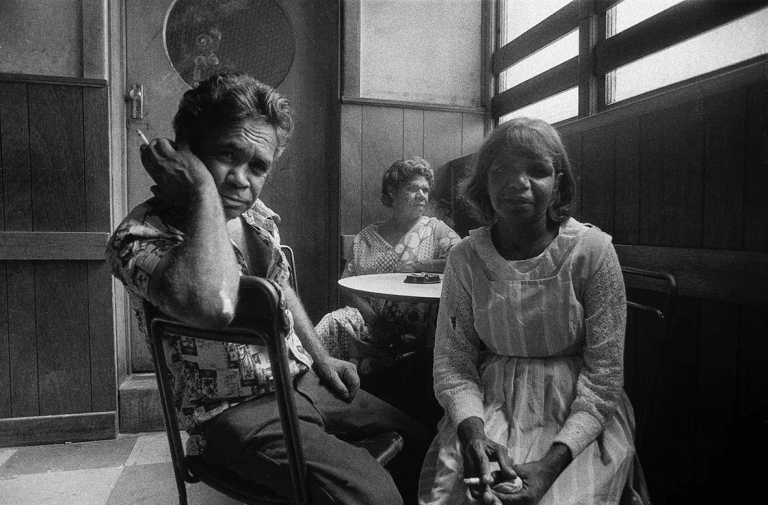
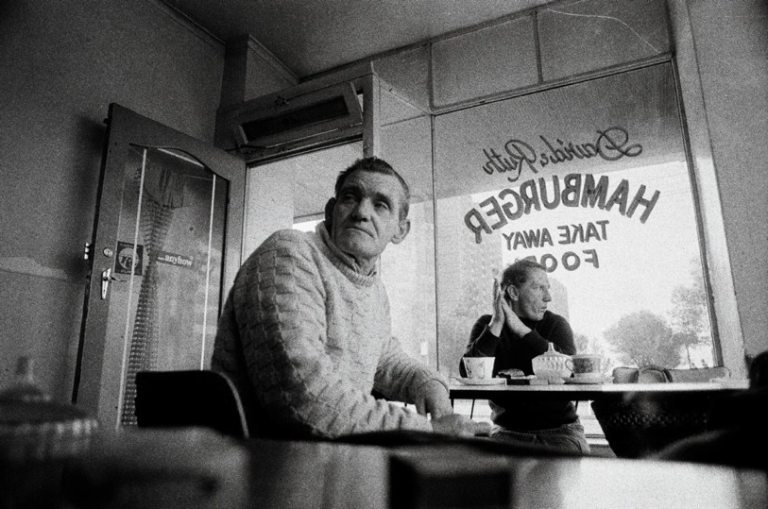
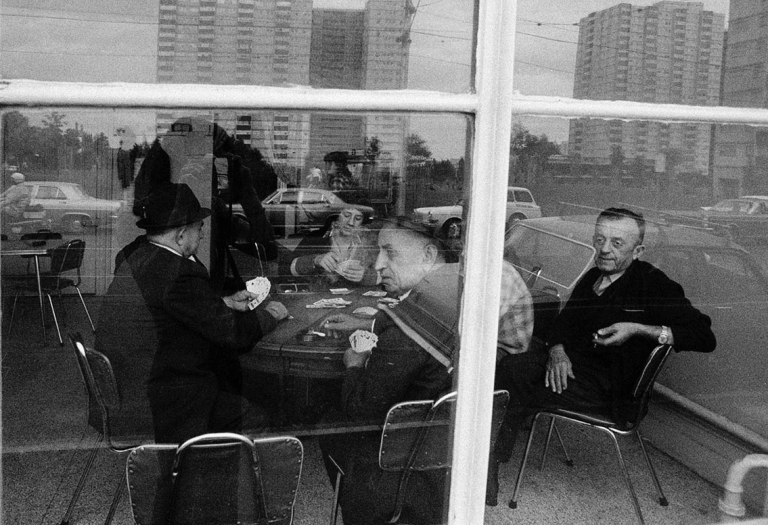
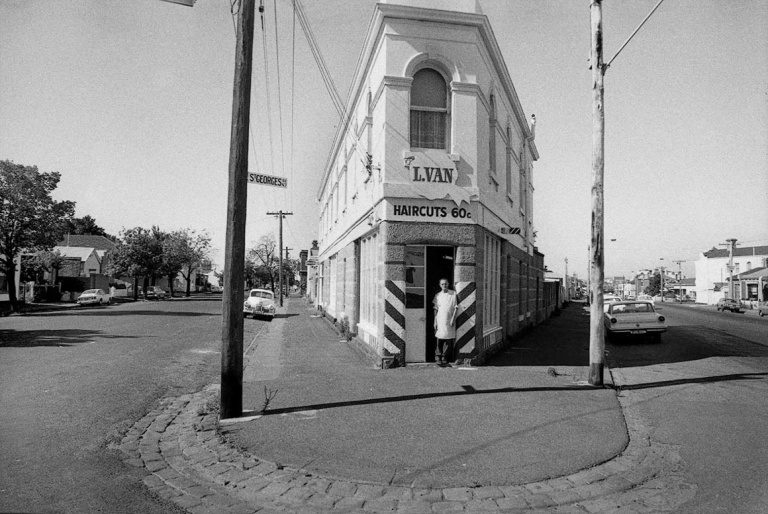
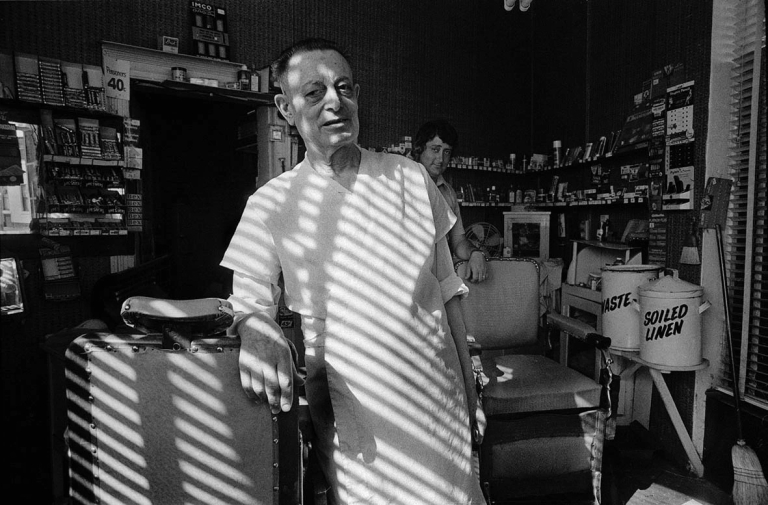

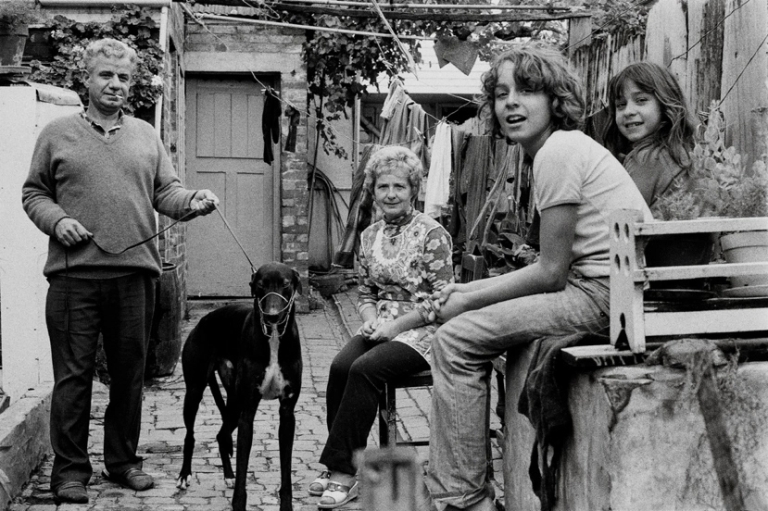
The contrast with the overwrought photography in Concern, Ashton’s approach in this commission is simply honest, respectful and sensitive, and still stands scrutiny after the critical revisionism in photography during the 1990s damaged faith in documentary imagery.
Ashton did not come from Fitzroy and unlike his colleague, the brash and gregarious Rennie Ellis, was quiet, even shy, and like one climbing a mountain for the first time he needed a guide, which came in the form of the Lovett brothers, from the well-respected Gunditjmara family, who gave him entry to the Builders Arms and Champion hotels and introduced him especially to the First Nations subjects.

Ashton’s documentary work of the 1970s has come to represent the era; his photograph Bernard Diving featured in the 1988 exhibition, and on the cover its catalogue, The Thousand Mile Stare, a survey of Australian photography published by the Victorian Centre for Photography, deployed across front and back cover so that his inclusion of his own shadow becomes a savvy endnote on changing attitudes to the photographic record of the ‘modern’. And yet, the documentary image that brings us closer to places and truths from which we are insulated, continues, particularly in the work of Prahrna alumnus Jim McFarlane and his associate Anthony Dawton who have for years photographed together for refugee charities in some of the poorest countries in the world, in some of the largest camps in the Middle East and emergency and chronic disasters in areas that have included Niger, Kashmir, Gaza and Zaatari.

Ashton may be 73, but by no means decrepit! His current practice is laborious; he photographs the bush around his home on the western coast of Victoria with a home-made, ultra-large-format camera and collodion plates in dimensions up to over a metre that he coats himself and prints often using the challenging photogravure technique, or processes the plates as ambrotypes (collodion positives) that are backlit in sculptural forms.

The show’s title Bush Theatre signals the physical and performative nature of such exacting work in vintage photography as much as it emphasises Ashton’s creation of a proscenium arch, the image.

There, the botanical forms make gestures conducted over long duration by the prevailing sea winds, light of the sun through overhanging foliage and over the seasons, the brute passage of large creatures like wallabies and wombats and the incremental effects of benign or malicious insects, in their search for water and sustenance in the humus and by interaction with companion plants. Shreds of bark hang from the tea-tree amid a mix of bracken, ferns, lignum, wattles, myrtle-beech, blackwood, banksias, goodenias, melaleucas, correa, heaths, daisy-bush and everlastings, saltbush, xanthorrea, spear-grass and spinifex, boobialla, wirilda, moonah and rare sheokes.


Ashton samples the semaphore of this range of flora in shadow-boxes; their whorls, and writhings, calligraphy, curls and clusters, in life or in their mummified remains, are drawn in silhouette by the subtle luminance of the bush beyond. He has devised ways to use glass; fish-bowls, bell-jars and test-tubes, to magnify his awareness of their vegetal fragility.


In their liveliness his landscapes are not a departure from Ashton’s youthful work as a street photographer but extend their trajectory; they capture and distill interactions of plants now, rather than people, in an environment far from the ‘urban jungle’ of Fitzroy, and at the pace that our mature years bestow and in which, acknowledging their increasing brevity, we value ever more the eternal and immutable.
[NOTE: These biographies are a work-in-progress for which primary research is preferred, but since not all the subjects are living or contactable, they may rely on a range of secondary or tertiary references. If you are, or if you know the subject, please get in touch. We welcome corrections, suggestions, or additional pertinent information in the comment box below or by contacting us at links here]
16 thoughts on “The Alumni: Robert Ashton”